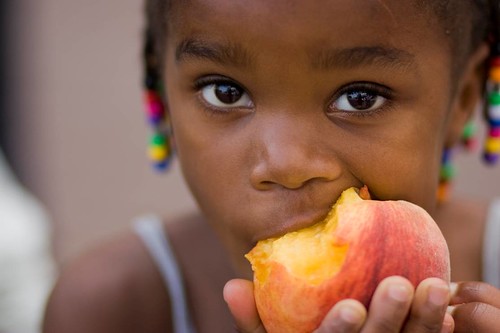
Summer is tough to enjoy when you’re hungry. It’s a hard reality that many kids from low-income households face when school is out and the weather turns sunny. To help close the summer feeding gap, the Summer Electronic Benefit Transfer demonstration offers a new model to do just that.
Without the daily nutrition provided by the National School Lunch Program and the School Breakfast Program, many families facing poverty are also experiencing its most difficult symptom: hunger. USDA has several tools to help solve this problem, with the newest addition being the Summer Electronic Benefit Transfer for Children demonstration project, commonly referred to as Summer EBT.
To better leverage this innovative solution, last month eight participating states and Tribal Organizations met over the course of two busy, inspiring days. Here, FNS hosted a conference for current grantees to meet and share best practices for making the most of their Summer EBT programs. Grantees from Connecticut, Cherokee Nation, Chickasaw Nation, Delaware, Michigan, Missouri, Nevada and Oregon gathered to discuss successes, challenges and hopes for the future of their programs. This was the first time since the beginning of the demonstration project that all were gathered together.
Despite significant strides made in recent years to increase access to summer meals across the country, only about 16 percent of the 22 million children that receive free or reduced price meals during the school year are reached through traditional summer meal programs. With this in mind, FNS looked at other strategies to feed children during the summer. Summer EBT was initiated in 2011 to test whether electronic benefits used at food stores (loaded onto EBT cards) helps reduce food insecurity among low-income children during the summer months.
A rigorous evaluation of the demonstration showed impressive results: benefits issued through Summer EBT reduced very low food security among participants by one third! In other words, one third of participating children who would have otherwise experienced severe food insecurity did not. As such, Summer EBT has the potential to be an additional tool in FNS’s toolbox of anti-hunger programs.
State and Indian Tribal Organization (ITO) programs, while all under the Summer EBT banner, each operate in a unique fashion. Although they have the same goal—to reduce children’s food insecurity—their paths to reach this vary. This flexibility to try different options was intentional on FNS’s part; not only is FNS testing the program, we are also testing program models. For example, some states issue benefits that can be used similarly to SNAP, where benefits can be used on any food items at SNAP retailers. Other states allow benefits to be used only at WIC retailers, on items in a specific food package.
In addition, when each program has their own way to address challenges—like building program infrastructure or working with food retailers—there are multiple avenues FNS considers when deciding the best, most efficient way to operate Summer EBT. The conference enabled states and ITOs the opportunity to share ideas and offer each other advice and support, all of which leads to stronger, more creative programs.
At FNS, we’re excited to continue coordinating collaboration between states and ITOs implementing the Summer EBT demonstration, especially in light of the reductions in food insecurity seen by the program. Perhaps these states will be among the forefront of new and innovative models to fight hunger across the country as a part of a National Summer EBT, leading the charge in USDA’s commitment to end child hunger.
